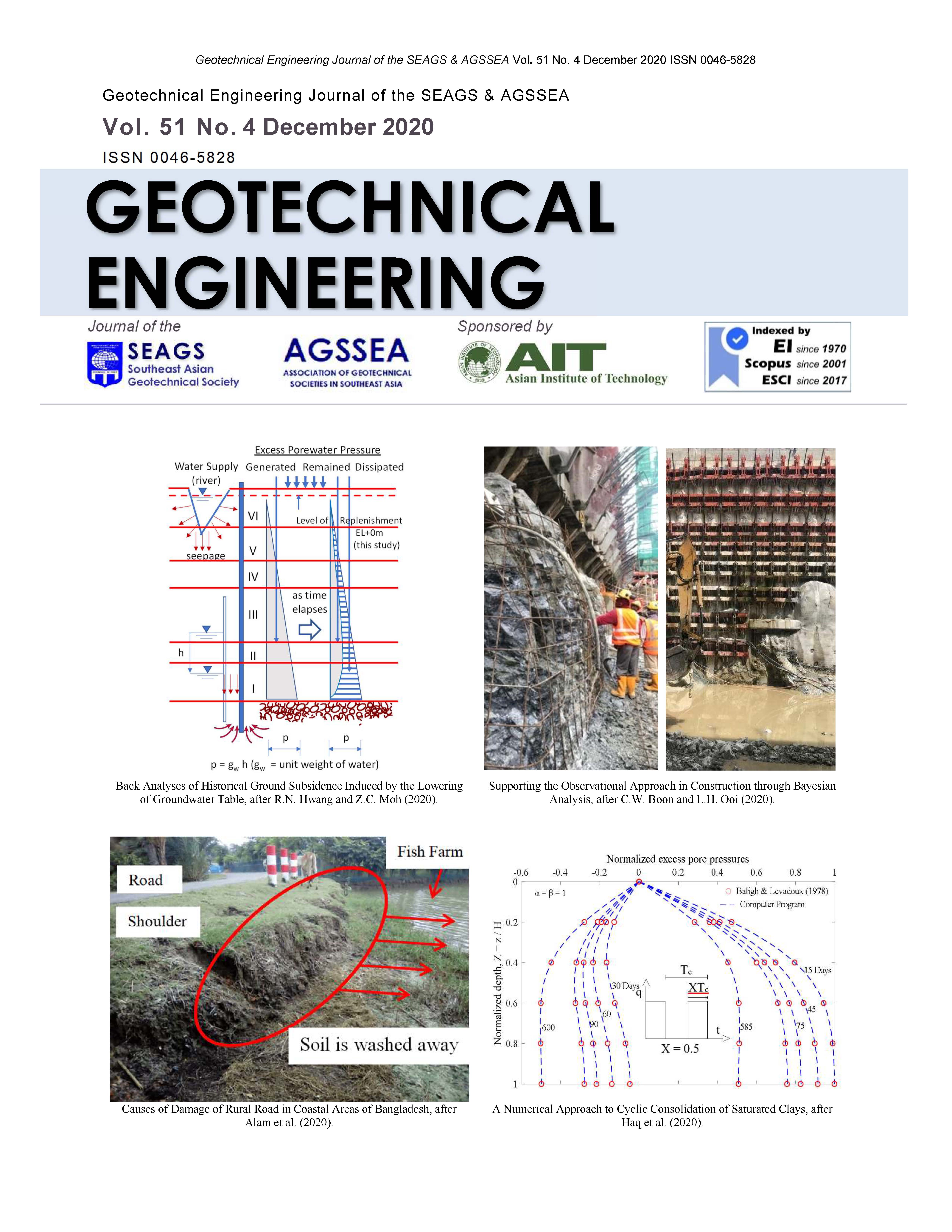Reliability of ULSD Theory in Geotechnics
Main Article Content
Abstract
The article discusses the theory of ultimate limit state design (ULSD) and its consequences. An influence of definitions both characteristic and design values of soil parameters of EN 1997-1 (Code) is analyzed. The article has two basic theoretical aims: a) To demonstrate the incorrectness of ULSD in geotechnics and due to it in-effectivity and risk. b) To present a concept of a more plausible and correct design theory which is simpler and in compliance with mathematical principles. A case of slope design is chosen from basic geotechnical problems because slope masses are most sensitive. Slope designs based on the design approaches of the Code are compared with a direct design value definition-based approach. Slope analysis exploits the results of a statistical analysis of an extensive database of soil material properties. The analysis is based on data sets of sandy and fine-grained soils and demonstrates the risk of homogeneity for ULS designs. Another simple geotechnical design concept suitable also for advanced numerical methods is suggested and a procedure example is presented.
Article Details

This work is licensed under a Creative Commons Attribution-NonCommercial-NoDerivatives 4.0 International License.
Copyright © 2019 Association of Geotechnical Societies in Southeast Asia (AGSSEA) - Southeast Asian Geotechnical Society (SEAGS).


